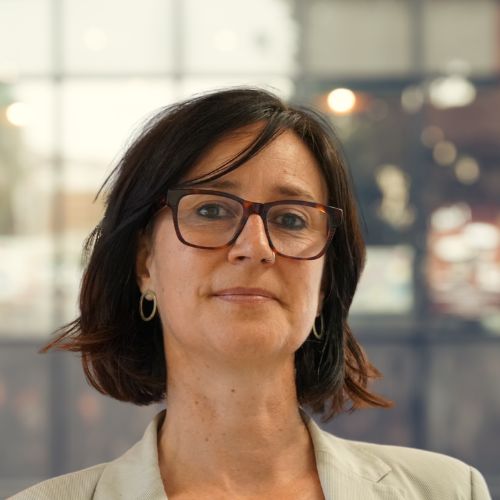
SolarBEAT, the outdoor test facility for BIPV
SolarBEAT (Solar Building Elements Application Testing) is a test facility of TNO and Eindhoven University of Technology (TU/e). Building-integrated solar energy products and systems are tested on our site 24/7 all year round, both for generating electricity and heat. As such, we play a crucial role in the development and roll-out of solar energy in the Dutch and European Energy transition.
Not every roof is suitable for traditional solar panels. They are also not always aesthetically desirable. Building integrated photovoltaics (BIPV) offers great opportunities in that perspective, for instance in the form of solar panels integrated in roofing and façade panels. With this in mind, TNO and TU/e founded SolarBEAT in 2014.
Innovative technologies
At SolarBEAT, we test components of installations such as PV modules, solar collectors, combinations (PVT), string and micro-inverters, power optimisers and batteries. We also take a closer look at the performance of complete solar power and heating systems. This involves improving innovative technologies and applications and developing completely new ones in cooperation with architects, construction companies, developers and installers.

Yield and robustness
We carry out the tests in real life conditions - outdoor. Products and systems are continuously monitored for yield and robustness, in relation to solar irradiance and weather conditions. All this is done using highly accurate measuring equipment, all year round and 24 hours a day. This provides valuable information to optimise and validate performance. This allows manufacturers to maximise business cases and introduce proven innovative technology.
Advanced infrastructure
With the contemporary solar and weather measuring station, we measure, with more than 1,000 sensors, solar irradiance, temperature, thermal insulation and energy yield. In addition, SolarBEAT has a complete thermal infrastructure for research on solar thermal systems, including heat pumps, buffer vessels and independent hot water flow. The results are stored in a secure central database. Confidential project data can only be accessed by authorised persons via a web portal.

Solar façades and roof tiles
SolarBEAT's home base is the TU/e campus in Eindhoven. On the roof and façades of the Vertigo building, scientists and companies continuously test and monitor many types of integrated solar energy technologies (BIPV) and their applications, including solar windows, solar façades, balcony fences and solar roof tiles.

Tested innovations by SolarBEAT
SolarBEAT tested various innovations with partners at the test facility. Below are some examples.
SolarBEAT supported company Solarge to develop its sustainable lightweight plastic solar panels and company Soluxa test coloured solar panels for application on building façades.
Another of SolarBEAT's partners is international glass manufacturer Pilkington. This company created a double-glazed BIPV window. Solar blinds are integrated in the front two layers. SolarBEAT is testing the yield of several variants of blinds, varying in colour and coating, solar cell technology and solar cell coverage.
In another project, TNO is working with several partners on alternative barrier films for solar cells. SolarBEAT tests these on small solar cells and compares lab results with outdoor measurements. However, the scalability of the hardware also enables precision measurements on smaller and larger solar cells. Here, we use measuring equipment developed by Dutch company ReRa Solutions.
For zero-emission buildings, buffering solar power and solar heat is crucial, as the sun doesn't always shine. That’s why we are also researching various storage systems. One example is the salt battery from Cellcius, a spin-off of TU/e and TNO.
Together with construction company Emergo, we are testing within a complete system, including heat pump and buffer vessels. In doing so, we simulate the use of an average household. This way, we help Cellcius optimise this battery to make it a commercial success.
To heat homes, we are increasingly moving away from using gas. As a result, the demand for heat pumps is rising. One innovative technique that we are developing and testing with partners is a heat exchanger integrated behind a solar panel, roof tile, under a terrace, or in the façade.
Another innovation we contributed to at our test facility is the SunSmart smart windows. The windows are equipped with a smart coating that regulates solar heat based on the temperature of the glass.
To test the performance of this coating, we installed two windows with the SunSmart coating and two standard windows in our facility. Over the course of a year, we measured the radiation passing through the windows.
The test results showed that it works: the thermochromic windows alternated between allowing and blocking heat (NIR radiation), depending on the temperature.
Thanks to the positive test results, receiving the Encouragement Award from the Glass Award 2025, and feedback from potential customers, the technology is being prepared for the European market as an independent company in 2025.
Get inspired
Real-world data confirms potential of vehicle-integrated solar panels


New EcoCertified Solar Parks: solar parks that deliver both energy and nature


Shade screens with rollable solar foil combines energy generation with climate control in greenhouses


Building fires with solar panels mapped for the first time


New multifunctional solar window generates energy by reflecting light


